Could Trump invoke Insurrection Act – and what powers would that give him?
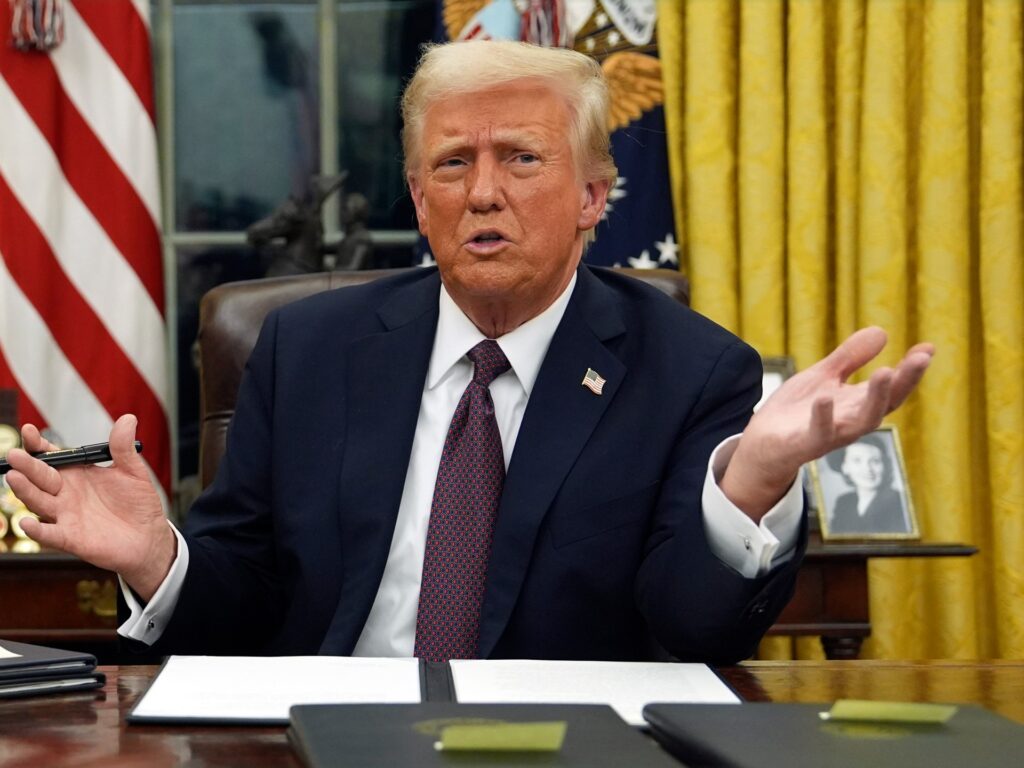
Social media posts have warned for more than a month that President Donald Trump would declare martial law on April 20, which typically means suspending civil law while the military takes control of civilian functions such as courts. But many of the posts appeared to conflate martial law with the potential invocation of the Insurrection Act of 1807, which was mentioned in a recent executive order. “I just learned about this executive order (section 6-b) which says Trump will invoke the Insurrection Act of 1807 on April 20th which will (amount) to declaring martial law,” a Reddit user posted on March 19. “That’s the end of the USA.” The narrative spread beyond Reddit to Facebook posts and videos shared on TikTok, X and Threads. Trump’s January 20 executive order declared a national emergency at the US southern border and required the defence and homeland security secretaries to submit a report on border conditions within 90 days. The report should include “any recommendations regarding additional actions that may be necessary to obtain complete operational control of the southern border, including whether to invoke the Insurrection Act of 1807”, the executive order said. Advertisement April 20 is the 90-day deadline. Invoking the Insurrection Act would allow Trump to direct federal military personnel to enforce federal law at the US southern border. But legal experts told PolitiFact it would not amount to martial law. They said they do not see a clear path for Trump to lawfully implement martial law in the way it’s commonly understood. Trump, on his part, has not publicly discussed martial law. In a statement to PolitiFact, the Defense Department said the agency is working with the Homeland Security Department to develop the requested report on the southern border conditions. PolitiFact contacted the Homeland Security Department and the White House and received no response. What would the Insurrection Act invocation allow? Invoking the Insurrection Act temporarily suspends another US law that forbids federal troops from conducting civilian law enforcement. A president can invoke the law after determining that “unlawful obstructions, combinations, or assemblages, or rebellion” against the federal government make it “impracticable to enforce” US law “by the ordinary course of judicial proceedings”. In those cases, the Insurrection Act would allow the president to direct federal troops “as he considers necessary to enforce those laws or to suppress the rebellion”. The Insurrection Act is broadly written and does not define terms such as “insurrection” or “rebellion”. In 1827, the US Supreme Court ruled that the authority to decide whether a situation represents an acceptable reason to invoke the Insurrection Act “belongs exclusively to the President”. Advertisement Chris Edelson, an American University assistant professor of government, said the law provides a “limited authority for the president to use the military to respond to genuine emergencies – a breakdown in regular operational law when things are really falling apart”. The act was invoked when southern governors refused to integrate schools and during the 1992 Los Angeles riots, after four white police officers were acquitted in the roadside beating of a Black man, Rodney King. Experts expressed doubt that the situation at the US southern border constitutes a breakdown or obstruction of federal law that would necessitate the use of the Insurrection Act the way the law was intended. Tung Yin, a Lewis and Clark Law School professor, said it’s hard to see how immigrants coming into the country illegally were obstructing state or federal laws. Obstruction is “more like an invading army or maybe such severe riots that the government has lost control”, he said. Martial law, on the other hand, typically refers to imposing military law on civilians. Edelson said the Insurrection Act “does not allow the president to completely replace regular authorities with military authority”. Chris Mirasola, University of Houston Law Center assistant professor, said military law is more stringent and has fewer protections for people than civilian law. US constitutional protections would not disappear if the Insurrection Act were invoked, Mirasola said. Yin said that when a president uses the Insurrection Act to call on the military to enforce civilian law, “that might seem like ‘martial law’ to a layperson. But it’s not a military government, which might be what people generally think of.” Advertisement Can Trump impose martial law at the southern border? In a 1946 ruling, the US Supreme Court wrote that the term martial law “carries no precise meaning” and said it wasn’t defined in the Constitution or an act of Congress. Edelson said because of this, “At the federal level, it’s not clear that presidents can declare martial law at all.” Mirasola said some other countries’ constitutions include provisions that outline when a president can declare martial law, but the US Constitution lacks such detail. Still, martial law has been declared before. The US imposed martial law in Hawaii for three years after the 1941 Japanese attack on Pearl Harbor. President Abraham Lincoln also declared martial law in certain parts of the US during the Civil War. President Andrew Johnson restored civilian law. At that time, the Supreme Court “more or less found that martial law could only be declared in an active war zone”, Mirasola said, citing an 1866 Supreme Court ruling that held that martial law cannot be imposed unless civilian courts aren’t open and functioning. For that reason, Mirasola said he could see no legal or constitutional basis for Trump to declare martial law to control the southern border, which “is not an area of active hostilities, notwithstanding how the administration continues to talk about the actions of cartels”. “The circumstances within which presidents have invoked martial law and that the Supreme Court has understood martial law are incredibly narrow,” he said. “It would require an active hostility on US territory that prevents civilian legal proceedings from occurring.” Advertisement Experts said Trump’s suggestions about using military powers could be one reason for the martial law speculation: In October, Trump said “radical left lunatics” in the US “should be very easily handled by, if necessary, by National Guard, or if really necessary, by the military”. In June
Russia’s Putin, Qatar’s emir discuss Syria and Gaza at Moscow talks
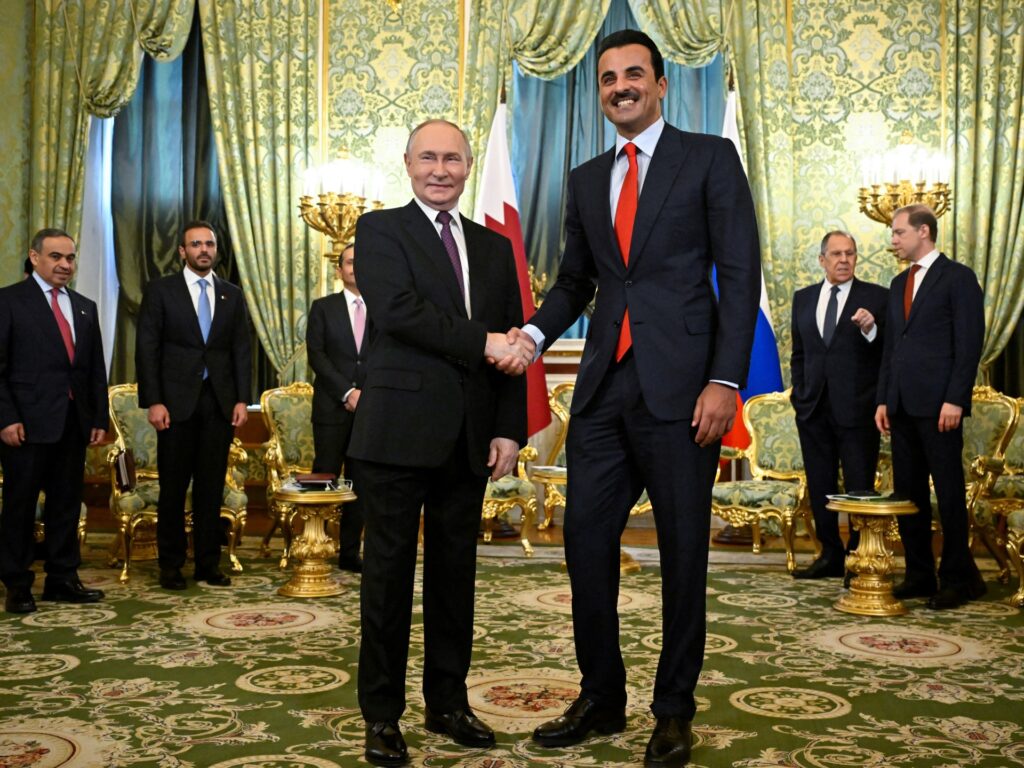
Ahmed al-Sharaa, Syria’s new leader, would like better relations with Moscow, Qatar said. Qatar’s Emir Sheikh Tamim bin Hamad Al Thani has told Russian President Vladimir Putin that Syria’s new leader is keen to build ties with Moscow. At talks in the Russian capital on Thursday, Al Thani assured the Russian leader that interim president Ahmed al-Sharaa was seeking to build relations with Russia, after the removal of former President Bashar al-Assad, who was a close ally of Moscow. “As for Syria, a few days ago President al-Sharaa was in Qatar, and we spoke with him about the historical and strategic relationship between Syria and Russia,” Al Thani told Putin. The talks come as Putin attempts to retain Russia’s use of two military bases in Syria to maintain its influence in the region after al-Assad fled the country in December as opposition fighters led by Ahmed al-Sharaa closed in on the capital. Putin said Syria’s situation, rocked by sectarian violence in recent weeks, was of serious importance. “We would like to do everything to ensure that Syria, firstly, remains a sovereign, independent and territorially integral state, and we would like to discuss with you the possibility of providing assistance to the Syrian people, including humanitarian assistance,” the Kremlin leader told the emir. Advertisement The two men also discussed the situation in Gaza, where Qatar played a key role in brokering a January ceasefire deal between Israel and Hamas for a three-phase ceasefire. Israel restarted its offensive in the besieged enclave in March, and talks to try to restore the ceasefire have so far failed to achieve a breakthrough. “We reached an agreement regarding Gaza a few months back, but Israel has not adhered to the agreement,” Al Thani said. “Qatar, in its role as a mediator, will strive to bridge differing perspectives in an effort to reach an agreement to end the suffering of the Palestinian people.” Putin told the emir, “We know that Qatar is making very serious efforts to resolve the Israeli-Palestinian conflict. Unfortunately, the initiatives put forward, including by you, have not been implemented. Peaceful people continue to die in Palestine, which is an absolute tragedy of today.” Interfax quoted Kremlin spokesperson Dmitry Peskov as saying there was no substantive discussion of the war in Ukraine, but Putin expressed thanks for Qatar’s involvement in arranging the return of children from both countries who were separated from their parents during the war. Adblock test (Why?)
Vietnam: 50 Years of Forgetting

The granddaughter of a Vietnamese hero explores the enduring legacy of the Vietnam War on her family and country. The 50-minute documentary 50 Years of Forgetting explores the enduring impact of the Vietnam War on the lives of contemporary Vietnamese. Prompted by a letter from an American veteran, filmmaker Mai Huyen Chi embarks on a personal and national investigation. Chi’s quest begins by unravelling the story of her war hero grandfather who fought for the winning North, a figure shrouded in family silence. As that soon meets its dissatisfying end, she embarks on a journey across Vietnam and meets people whose lives were shaped by some of the most traumatic events of the war: the Battle of Hue in 1968, the Christmas bombing in 1972 and the fall of Saigon in 1975. Their experiences, filled with both resilience and loss, force Chi to confront her own family’s buried truths. She discovers the story of her aunt married to a pilot on the losing Southern side who fled, highlighting the war’s fracturing impact on Vietnamese families across generations. The exploration becomes deeply personal. Chi confronts a harsh reality: Her own cousin suffers from the debilitating effects of Agent Orange, a cruel consequence of the war that continues to inflict pain on countless Vietnamese. By weaving these diverse narratives together, 50 Years of Forgetting transcends the Vietnam War to explore universal themes of conflict and its enduring legacies. Will past lessons be forgotten? Can Vietnam build a collective memory that honours the sacrifices of millions of people when those who endured years of brutality during the Vietnam War are trying so hard to forget? Advertisement Adblock test (Why?)
Israel kills children in attacks on tents including Gaza’s “safe zone”
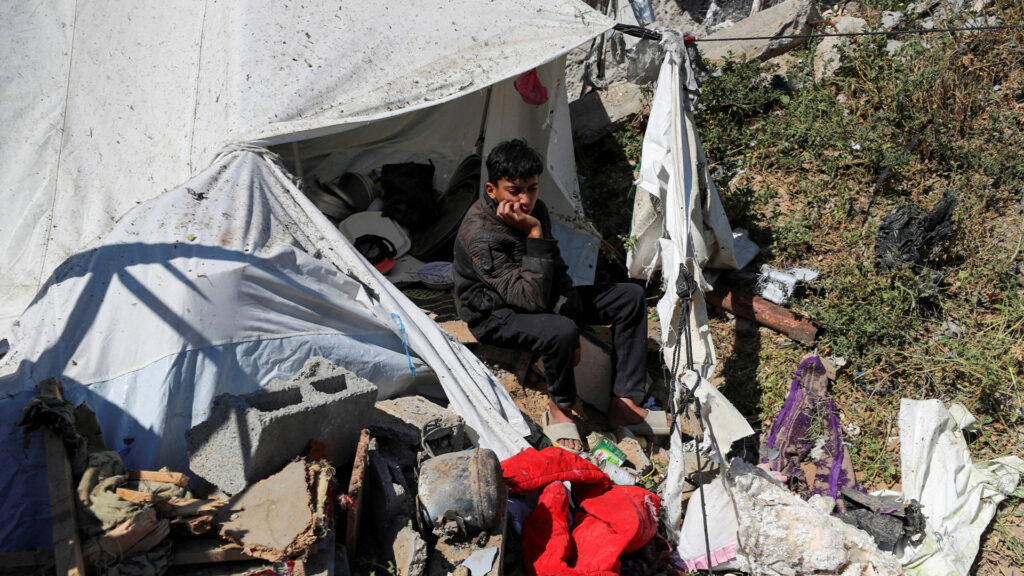
NewsFeed Israeli air attacks on tents in Gaza have killed at least 35 Palestinians in the past 24 hours. A strike on a camp sheltering forcibly displaced Palestinians in the al-Mawasi ‘safe zone’ burned several people alive. Published On 17 Apr 202517 Apr 2025 Adblock test (Why?)
Video: Easter overshadowed by war for Christians in Palestine
[unable to retrieve full-text content] Palestinian Christians in the occupied West Bank and Gaza find little joy beset by war and conflict.
Russia-Ukraine war: List of key events, day 1,148
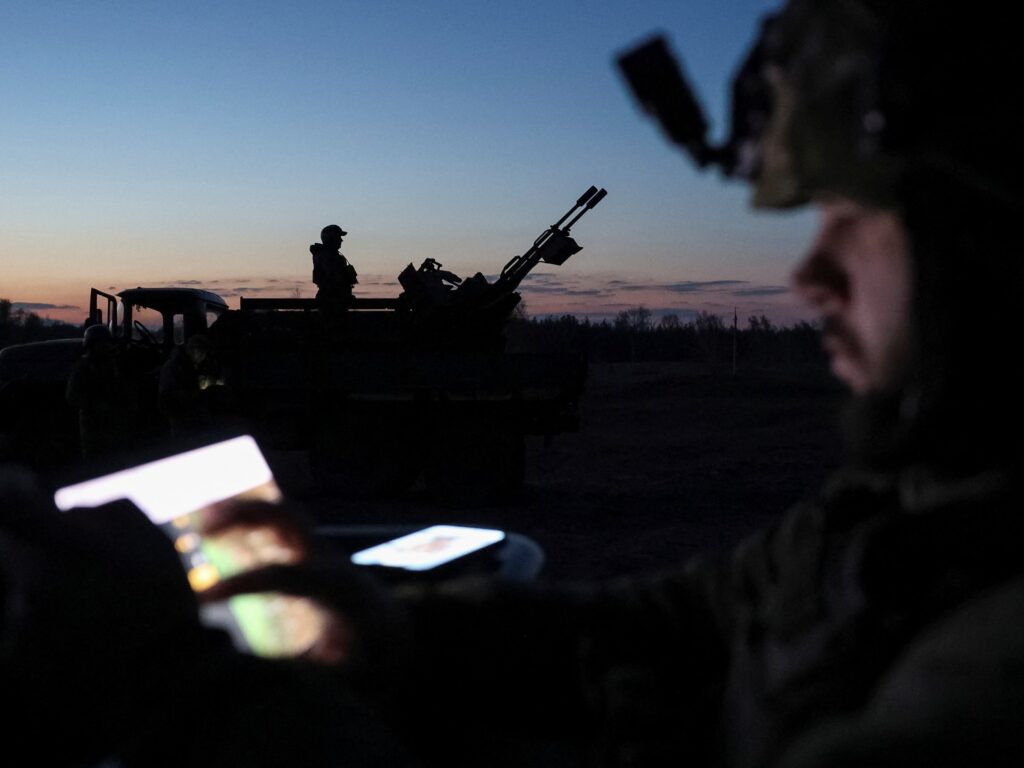
These are the key events on day 1,148 of Russia’s war on Ukraine. Here is where things stand on Thursday, 17 April: Fighting A Russian drone attack on the Black Sea port city of Odesa overnight injured three people, sparked fires and damaged homes and civilian infrastructure, regional governor Oleh Kiper said. Russia’s Ministry of Defence said its units destroyed 26 Ukrainian drones overnight. Nine of the drones were shot down over the southern Voronezh region, while eight were taken down over the border region of Belgorod. The remaining drones were downed over the Kursk, Lipetsk and Moscow regions, as well as over the Russian-annexed Crimean peninsula, the ministry said. The Defence Ministry also said Russia has taken control of Kalynove village in Ukraine’s eastern Donetsk region. Moscow’s military further reported that it repelled seven Ukrainian drones over Russia’s Ivanovo region, the location of one of two Russian missile units that Kyiv accuses of launching a deadly attack on the city of Sumy which caused dozens of casualties last weekend. Kyiv’s air force said Russia launched almost 100 drones in overnight attacks on Ukraine, of which 57 were shot down and another 34 failed to reach their targets, likely due to electronic warfare measures. Advertisement Russian glide bombs and artillery struck the city of Kherson in southern Ukraine on Wednesday, killing one person and wounding nine others, in what Ukrainian officials described as a timed “double-tap strike”. The region’s head, Oleksandr Prokudin, said it was a “deliberate tactic by Russia” to prevent rescuing victims and to harm medics, rescuers and police officers who rushed to the scene of the first attack only to then be caught in the second strike. A Russian mass drone attack killed two people and injured 16 in the southeastern Ukrainian city of Dnipro, regional governor Serhiy Lysak said. Five of the injured were hospitalised. The Security Service of Ukraine (SBU) said it detained nine people, including five teenagers, with more than 30kg (66 pounds) of explosives on suspicion of preparing sabotage attacks on behalf of Russia. Attacks on energy facilities Russia’s Defence Ministry said Ukraine carried out six attacks on Kremlin energy infrastructure despite a mutually agreed 30-day moratorium on energy strikes. Ukraine’s Ministry of Foreign Affairs spokesperson, Heorhii Tykhyi, told a news briefing that Russia carried out more than 30 attacks on its energy infrastructure since the two sides agreed in March to pause strikes on such targets. Kremlin spokesperson Dmitry Peskov said Russia would announce when the US-brokered moratorium on energy strikes would end. Politics and diplomacy United States President Donald Trump’s administration has reduced its estimate for the cost of US assistance provided to Kyiv since the start of Russia’s invasion to about $100bn from $300bn, Bloomberg news reports, citing people familiar with the matter. The US and Ukraine have made “substantial progress” in their talks on a minerals deal and will soon sign a memorandum, which would give Washington access to Ukraine’s rare earth deposits, Kyiv’s first deputy prime minister Yulia Svyrydenko said. Advertisement Kyiv’s parliament voted to extend martial law in Ukraine until 6 August. The decision was supported by an overwhelming 357 deputies, while one politician voted against the bill. Russian President Vladimir Putin and Qatar’s Emir Sheikh Tamim bin Hamad Al Thani will discuss Ukraine among other issues during the emir’s visit to Moscow on Thursday, Kremlin spokesman Peskov said. The former governor of Russia’s Kursk region, Alexei Smirnov, was detained on Wednesday on suspicion of fraud, Russian state news agency TASS reported. Adblock test (Why?)
Trump touts ‘progress’ in Japan trade talks, as uncertainty roils stocks
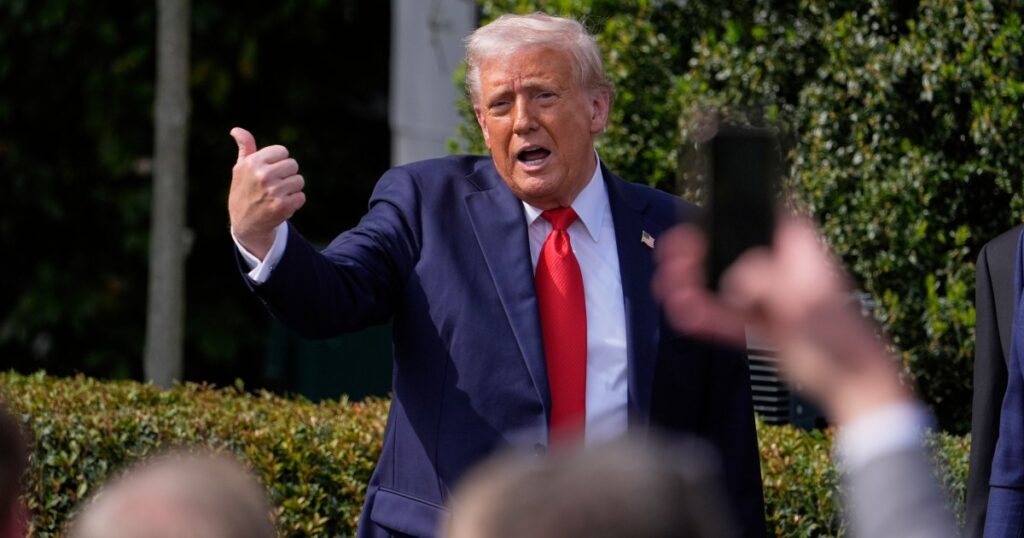
Wall Street closes sharply lower as US Federal Reserve chair warns tariffs could lead to slower growth, higher inflation. United States President Donald Trump has touted “big progress” in trade talks with Japan after making an unexpected intervention in the negotiations, as uncertainty caused by his sweeping tariffs continues to roil stock markets. Trump made his comments on Wednesday after making the surprise decision to sit in on negotiations between his administration and Japanese officials in Washington, DC. “A Great Honor to have just met with the Japanese Delegation on Trade. Big Progress!” Trump wrote on Truth Social after the talks, which included US Treasury Secretary Scott Bessent, US Commerce Secretary Howard Lutnick and Economic Revitalization Minister Ryosei Akazawa. Akazawa said after the meeting that Trump wanted to reach a deal before the end of his 90-day pause on his “reciprocal” tariffs, with the Japanese hoping to see the agreement sealed “as soon as possible.” Japanese Prime Minister Shigeru Ishiba said the negotiations would not be easy, but the initial rounds of talks had “created a foundation for the next steps”. Advertisement Like dozens of other US trade partners, Japan has been hit with a 10 percent baseline tariff in addition to duties of 25 percent on cars, steel and aluminium, which rank among the East Asian country’s top exports. Japan, a top US security ally and its fourth-largest trade partner, is also facing a targeted 24 percent “reciprocal” tariff under Trump’s “liberation day” trade measures, nearly all of which have been paused until July 9. “Japan’s industry is so closely integrated in the US economy that everyone is very concerned about the trade talks,” Martin Schulz, chief policy economist at Fujitsu in Tokyo, told Al Jazeera. “Although there cannot be winners in a trade war, we are also quite optimistic that agreeable results can be achieved. Japan is the largest investor in the US and interested in investing more.” “If both economies can be kept on a growth track, higher imports from the US become possible,” Schulz added. The US-Japanese talks came as Wall Street racked up further heavy losses amid continuing uncertainty over Trump’s trade salvoes. The benchmark S&P 500 closed 2.24 percent lower on Wednesday, while the tech-heavy Nasdaq Composite fell 3.07 percent. The losses followed a warning by US Federal Reserve Chair Jerome Powell that Trump’s steep tariffs could leave the US economy grappling with weak growth, rising unemployment and higher inflation all at once. “We may find ourselves in the challenging scenario in which our dual-mandate goals are in tension,” Powell said in a speech to the Economic Club of Chicago on Wednesday, referring to the US central bank’s twin goals of maximum employment and stable prices. Advertisement “If that were to occur, we would consider how far the economy is from each goal, and the potentially different time horizons over which those respective gaps would be anticipated to close.” US stocks have been on a rollercoaster ride since Trump’s inauguration in January, alternating between sharp dips and big jumps amid his back-and-forth tariff announcements. Financial markets and businesses have been on tenterhooks waiting for signs that the US president is open to watering down or scrapping many of his tariffs in exchange for concessions from US trading partners. Trump administration officials have said that more than 75 countries have reached out to begin negotiations on trade. After the latest losses on Wall Street, the S&P 500 and Nasdaq are down about 10 percent and 15 percent, respectively, since the start of the year. Asian stock markets got off to a better start on Thursday, with Japan’s benchmark Nikkei 225, South Korea’s KOSPI and Hong Kong’s Hang Seng Index each rising more than 0.5 percent in early trading. Adblock test (Why?)
As Trump threatens tariffs, Vietnam scrambles to avert economic disaster
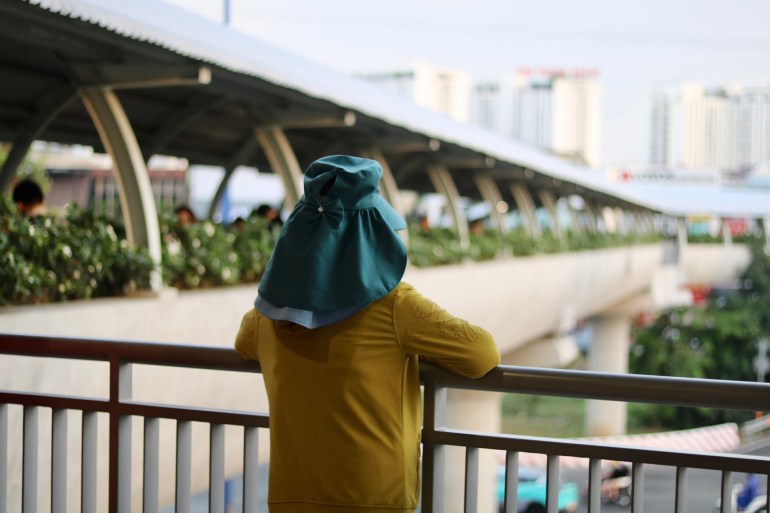
Ho Chi Minh City, Vietnam – Kieu Quoc Thanh, the CEO of cashew export business SVC Group, says that everyone in his industry has been “feeling crazy” for the past two weeks. Since United States President Donald Trump announced his since-paused “reciprocal” tariffs on April 2, Thanh has witnessed mass confusion among Vietnamese exporters. Many businesses reliant on the US market are checking online hourly for updates on the tariffs, Thanh says, while he has a shipping container full of cashews bound for the US market currently sitting in limbo. Since Trump announced a 90-day pause on Vietnam’s 46 percent tariff and duties on dozens of other countries, the US has imposed a baseline 10 percent levy on imports from all countries, including Vietnam. But Thanh’s customers in the US and customs officers alike are uncertain how much to tax his products, he says. “No one knows what’s happening,” Thanh told Al Jazeera at his Ho Chi Minh City office last week. A man stands outside Phuc Long Port in Ho Chi Minh City, Vietnam, on April 10, 2025 [Govi Snell/Al Jazeera] While businesses such as Thanh’s navigate the disruption, Hanoi and Washington are in discussions about a trade deal after agreeing to begin negotiations on April 10. Advertisement For Vietnam, one of the world’s most export-reliant economies, the stakes could scarcely be higher. The US is the Southeast Asian country’s biggest export market, with shipments to it alone last year accounting for 30 percent of gross domestic product (GDP). While Trump’s tariff pause led to some hope in Vietnam, the country is on tenterhooks about what might happen next, said Tyler Manh Dung Nguyen, chief market strategist at equity firm Ho Chi Minh City Securities Corporation. “We are having a period of extreme uncertainty, not only for the financial market, but also for businesses,” Nguyen told Al Jazeera. “It’s like a reality show,” Nguyen added. “Everything changes every day.” Trump’s trade salvoes have drawn sharp contrast with the decades-long process of warming relations between Washington and Hanoi, culminating in the former enemies upgrading their ties to a “Comprehensive Strategic Partnership” in 2023. For Eddie Thai, a Vietnamese American who co-founded the Ho Chi Minh City-based venture capital firm Ascend Vietnam Ventures, it has been disheartening to see relations come under strain, particularly ahead of the upcoming 50th anniversary of the end of the Vietnam War on April 30. “I don’t think it has thrown us back 50 years, I wouldn’t say that far, but it is burning a lot of goodwill that a lot of people on both sides of the ocean have been trying to build since the 90s,” Thai told Al Jazeera, calling Trump’s dealing with Vietnam destructive and personally “disappointing as an American”. Chinese President Xi Jinping waves as he boards his plane at Noi Bai International Airport in Hanoi on April 15, 2025 [Athit Perawongmetha/ Pool via AFP] With the US and Vietnam looking towards a trade deal, China, Hanoi’s biggest source of imports and its second-largest export destination, has loomed large over the negotiations. Advertisement On Monday, Chinese President Xi Jinping visited Hanoi as part of a five-day tour of Southeast Asia, a trip widely seen as an effort to cast China as a more reliable trading partner for the region than the US. Upon his arrival, Xi was greeted at the airport by Vietnamese President Luong Cuong, and later received a 21-gun salute at Hanoi’s Presidential Palace. Reacting to the warm reception for the Chinese leader, Trump suggested the countries would use their talks to scheme against the US. “That’s a lovely meeting. Meeting like, trying to figure out, ‘How do we screw the United States of America?’” Trump told reporters at the White House. According to Chinese state news outlet Xinhua, Xi urged Vietnam to resist “unilateral bullying” and stated that “China’s mega market is always open to Vietnam”. During Xi’s visit, the countries signed 45 agreements, Chinese and Vietnamese media reported, without providing details of the deals. With the US and China slapping each other’s goods with tariffs exceeding 100 percent, Vietnam has become the “diplomatic guy in the middle,” said Nguyen, the strategist at Ho Chi Minh City Securities Corporation. “[Hanoi] always tries to be neutral in every situation,” Nguyen said. “We do not side with one country to fight another country.” US trade deficit Trump’s tariffs have also raised the ire of foreign businesses based in Vietnam. It would be an impossible task for Vietnam to erase its trade deficit with the US – the third-highest in 2024 at $123.5bn – given the differences between the two economies, said Bruno Jaspaert, general director of DEEP C Industrial Zones in the northern port town of Haiphong. Advertisement “Any country like Vietnam, in reality, has no leverage against the States,” Jaspaert, who is also head of EuroCham Vietnam, told Al Jazeera. “That stupid formula of theirs can never ever be balanced because it will take decades before Vietnam can buy enough,” Jaspaert said, referring to the controversial calculations used by the Trump administration to come up with its “reciprocal” tariff rates. Facing the threat of a huge economic blow, Hanoi has put considerable effort into getting into the good graces of the Trump administration. The government has pledged to buy more Boeing planes and liquefied natural gas, and opened talks on purchasing C-130 cargo planes from Lockheed Martin. Last month, officials agreed to allow Elon Musk’s Starlink satellite internet service to operate in the country on a trial basis. Vietnam has also signed deals with the Trump Organization. Shortly before Trump’s re-election, his holding company agreed to invest $1.5bn in a golf course and hotel project in Communist Party chief To Lam’s home province of Hung Yen. Commuters sit in traffic in Ho Chi Minh City, Vietnam [Govi Snell/Al Jazeera] “I believe that the leadership in Hanoi – they have done a lot to secure a more lenient approach,” Nguyen Khac Giang, visiting fellow at Singapore’s ISEAS-Yusof Ishak Institute, told
US envoy says fighting in Gaza would ‘end immediately’ if captives released
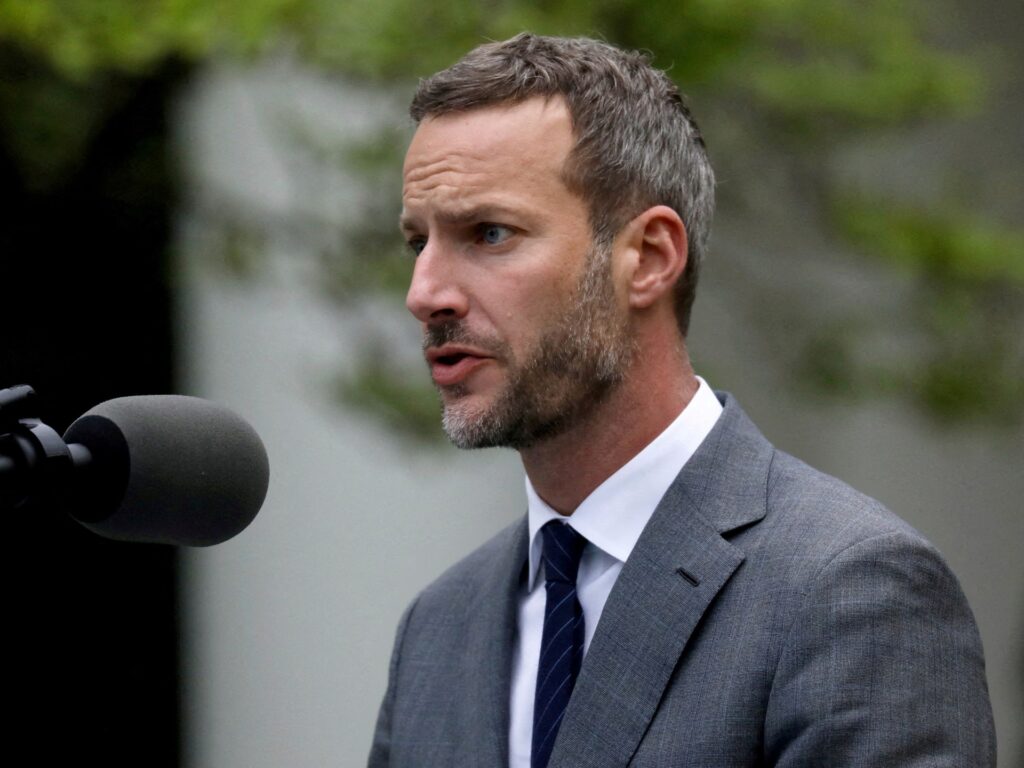
Adam Boehler tells Al Jazeera ‘nothing goes forward’ on ceasefire deal until release, as Israel’s assault continues. Washington, DC – Israeli attacks on Gaza will end if Hamas releases all remaining captives, US President Donald Trump’s top hostage envoy said in an interview with Al Jazeera. “I can tell you that the fighting would end immediately, immediately if hostages are released,” said Adam Boehler, US special envoy for hostage response. “The day that those hostages are released, the fighting will end.” Boehler’s comments on Wednesday came as the death toll from Israel’s offensive in Gaza reached 51,025, with at least 1,652 Palestinians killed since Israel’s attacks resumed after an earlier ceasefire brokered by Trump’s administration ended in March. Despite Israel’s ongoing assault on the enclave, Boehler said the ball was in Hamas’s court. “They can reach out any time,” he said from the White House lawn. “Hamas can end this.” Boehler added that Trump has been clear that “nothing goes forward until all hostages are released”. “Step one is all hostages released,” Boehler said. “Step two is, let’s figure out this day after.” Advertisement He did not elaborate on what that “day after” would look like, only referring briefly to Trump’s suggestion of mass displacing Palestinians from Gaza to neighbouring countries. Hamas has said it will only release more captives if a new agreement to end the fighting is reached first. Such an agreement would need to include guarantees that have so far proven non-starters, including a full withdrawal of Israeli forces from Gaza. Under the previous six-week ceasefire agreement, Hamas released a total of 33 captives held in Gaza in exchange for an increase in humanitarian aid into the enclave and the release of Palestinian prisoners held by Israel. A second phase, agreed to in principle, was meant to see the release of all remaining captives held in Gaza in exchange for a permanent end to fighting. A third phase was meant to see the release of all the bodies of captives and the implementation of a reconstruction plan. But negotiations broke down following the completion of the first phase of the agreement, with Israel immediately renewing attacks. Beyond those killed, the United Nations has said at least 500,000 Palestinians have been newly displaced in the latest round of fighting. Earlier this week, Israeli Defence Minister Israel Katz said the military had completed creating a “security zone” between the southern cities of Rafah and Khan Younis. He added that the Israeli military would “vigorously” expand its operation in Gaza. Israel has estimated that 24 living captives remain in Gaza, all believed to be male soldiers. The bodies of 35 other captives are also believed to still be in the Palestinian enclave. Advertisement Edan Alexander Boehler, who held direct talks with Hamas officials in March, spoke to Al Jazeera after Hamas rejected a new Israeli ceasefire proposal calling for the group to fully disarm the day before. Hamas also claimed on Tuesday that it had lost contact with the group holding Israeli-American captive Edan Alexander after “direct Israeli bombardment” targeted the area where he was being held. Boehler dismissed the claim, saying he was certain Alexander was in a safe place and that Hamas would be “stupid” to harm him. If anything were to happen to Alexander, it’s “not going to be pretty”, he added, without elaborating. Adblock test (Why?)
Fifty years after fall of Phnom Penh, history weighs on Cambodian politics

Fifty years after the fall of Phnom Penh to the Khmer Rouge rebel army, the events of April 17, 1975 continue to cast a long shadow over Cambodia and its political system. Emerging from the bloodshed and chaos of the spreading war in neighbouring Vietnam, Pol Pot’s radical peasant movement rose up and defeated the United States-backed regime of General Lon Nol. The war culminated five decades ago on Thursday, with Pol Pot’s forces sweeping into Cambodia’s capital and ordering the city’s more than two million people into the countryside with little more than the belongings they could carry. With Cambodia’s urban centres abandoned, the Khmer Rouge embarked on rebuilding the country from “Year Zero”, transforming it into an agrarian, classless society. In less than four years under Pol Pot’s rule, between 1.5 and three million people were dead. They would also almost wipe out Cambodia’s rich cultural history and religion. Many Cambodians were brutally killed in the Khmer Rouge’s “killing fields”, but far more died of starvation, disease and exhaustion labouring on collective farms to build the Communist regime’s rural utopia. Advertisement In late December 1978, Vietnam invaded alongside Cambodian defectors, toppling the Khmer Rouge from power on January 7, 1979. It is from this point onwards that popular knowledge of Cambodia’s contemporary tragic history typically ends, picking up in the mid-2000s with the start of the United Nations-backed war crimes tribunal in Phnom Penh, where former regime leaders were put on trial. For many Cambodians, however, rather than being relegated to history books, the 1975 fall of Phnom Penh and the toppling of the Khmer Rouge in 1979 remain alive and well, embedded in the Cambodian political system. That tumultuous Khmer Rouge period is still used to justify the long-running rule of the Cambodian People’s Party (CPP) under varying forms since 1979, and the personal rule of CPP leader Hun Sen and his family since 1985, according to analysts. It was the now ageing senior leadership of the CPP who joined with Vietnamese forces to oust Pol Pot in 1979. While memories of those times are fading, the CPP’s grip on power is as firm as ever in the decades since the late 1970s. ‘The making of a political system’ The ruling CPP see “themselves as the saviour and the guardian of the country”, said Aun Chhengpor, a policy researcher at the Future Forum think tank in Phnom Penh. “It explains the making of a political system as it is today,” he said, noting that the CPP has long done what it required to “ensure that they are still there at the helm … at any cost”. Most Cambodians have now accepted a system where peace and stability matter above all else. Advertisement “There seems to be an unwritten social contract between the ruling establishment and the population that, as long as the CPP provides relative peace and a stable economy, the population will leave governance and politics to the CPP,” Aun Chhengpor said. “The bigger picture is how the CPP perceives itself and its historic role in modern Cambodia. It’s not that different from how the palace-military establishment in Thailand or the Communist Party in Vietnam see their roles in their respective countries,” he said. A Cambodian student looks at a poster of former Khmer Rouge leaders during an educational outreach programme [File: Tang Chhin Sothy/AFP] The CPP headed a Vietnamese-backed regime for a decade, from 1979 to 1989, bringing relative order back to Cambodia after the Khmer Rouge, even as fighting persisted in many parts of the country as Pol Pot’s fighters tried to reassert control. With support dwindling from the Soviet Union in the last days of the Cold War and an economically and militarily exhausted Vietnam withdrawing from Cambodia, Hun Sen, by then the leader of the country, agreed to hold elections as part of a settlement to end his country’s civil war. From 1991 to 1993, Cambodia was administered by the UN Transitional Authority in Cambodia (UNTAC). The Cambodian monarchy was formally re-established, and elections were held for the first time in decades in 1993. The last Khmer Rouge soldiers surrendered in 1999, symbolically closing a chapter on one of the 20th century’s bloodiest conflicts. Advertisement Despite a bumpy road forward, there were initial hopes for Cambodian democracy. The royalist National United Front for an Independent, Neutral, Peaceful and Cooperative Cambodia Party – better known by its acronym FUNCINPEC – won the UN-administered elections in 1993. Faced with defeat, the CPP refused to cede power. The late King Norodom Sihanouk stepped in to broker an agreement between both sides that preserved the hard-won peace and made the election a relative success. The international community breathed a sigh of relief as the UNTAC mission in Cambodia had been the largest and costliest at that time for the world body, and UN member states were desperate to declare their investment in nation rebuilding a success. Ruling jointly under a power-sharing agreement with CPP and FUNCINPEC co-prime ministers, the unsteady alliance of former enemies held for four years until ending in a swift and bloody coup by Hun Sen in 1997. Mu Sochua, an exiled opposition leader who now heads the nonprofit Khmer Movement for Democracy, told Al Jazeera that the CPP’s resistance to a democratic transfer of power in 1993 continues to reverberate throughout Cambodia today. “The failure of the transfer of power in 1993 and the deal the King made at the time … was a bad deal. And the UN went along because the UN wanted to close shop,” she told Al Jazeera from the US, where she lives in exile after being forced to flee the CPP’s intensifying authoritarianism at home. “The transitional period, the transfer of power … which was the will of the people, never happened,” Mu Sochua said. Advertisement End of warfare does not mean the beginning of peace Following the coup in 1997, the CPP did not come close to losing power again until 2013, when they
